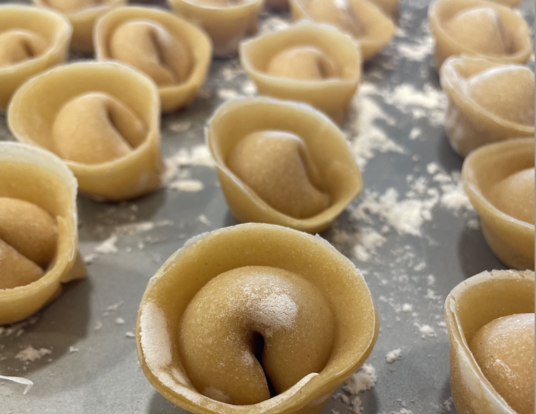The Two Writers Within
Notes From a Writer's Desk

On pleasant days, I relish the opportunity to go for a stroll and sit outside to read or write, if only for a short while. The change of environment, I find, stimulates different parts of my brain and often leads to the spark of an idea, which I hastily try to jot down somewhere—a notebook, my laptop, the blank side of a random piece of paper—before I lose it altogether. Recently, on a pristine spring afternoon, I decided to retreat to the idyllic garden behind the Longfellow House. Sitting in solitude among the flower beds and flittering birds, I imagined Longfellow himself on the bench beside me, absorbed in the translation of an especially sublime canto of Dante. Soon, words flowed from my pen with unusual ease.
Scribbling lines in this manner becomes a frantic attempt to capture the essence of a moment of insight, but the writing itself is not remotely close to a final product. Only later will I paste those thoughts alongside various other fragmented notes and turn to the next step of the writing process: deciphering and narrating a coherent story out of the disparate elements. It is this slow, measured act of bringing order to ideas that characterizes the bulk of the time we spend writing.
Reflecting on her writing process, the novelist Elena Ferrante describes a feeling of fluctuating between two distinct poles. On one side is the prudent approach, a remnant of her childhood diligence to stay within the margins, those “red lines in the elementary-school notebooks” that keep students timid, keep them, literally, in line. On the other side is a more primal impulse, a type of writing that Ferrante knows, yet does not know how to control. If her writing is founded on patience, then she plods along waiting for that “convulsive act” to erupt, the true writing that throws the “papers into disarray.” This burst of inspiration gives life to writing.
As the writer that begets yet does not control the written “I” that emerges, Ferrante finds herself in a paradox: she yearns for the satisfaction of staying within the margins, yet decries the loss, the waste, that comes with these strict limits. Her plight resonates. In academic writing, we are always working within certain boundaries—most of them externally imposed—that force us to make difficult decisions about the story we can tell; often, it’s the more freewheeling rhetoric that we must abandon. But without the constraint, we might never create anything legible: limits force us to corral our mind’s unbridled momentum and channel those ideas into communicable knowledge. Only through imposing limits can we weave our layers of thought into the most logical structure for our particular purpose. Ultimately, both the creativity and the control are necessary.
The linear narrative that results from this process is something of a sleight of hand. Reaching that point entails a considerable commitment of time and energy. Writing also requires writing, lots of it. Writing practitioners often give the advice that we should write every day. This insistence, I believe, is misleading. On a given day, we might find ourselves composing neat prose or writing down insightful ideas in messy strokes—the two extremes that Ferrante underscores. On other days, however, we may engage in the other kinds of activities that constitute the process of writing, which could mean taking notes on critical research (perhaps in the margins!), revising our drafts, writing creatively, or even merely reflecting. There are many dialogic modes of thinking and writing, and in the creation of a compelling text, these modes not only reinforce each other, but depend on each other.
In the end, we should write with abandon when we feel the impulse. But we should also remember that polished prose doesn’t magically cohere in the ether and materialize on the page; it must be earned through effort, through a slog of many more words than a word count allows. In the pursuit of perfection, we get ever closer to something, but it’s a pursuit that will extend beyond any one publication. Indeed, without the artificial boundaries of page limits or deadlines or stylistic conventions, the end point might recede infinitely, thrusting us into a nightmarish void from which our writing can never emerge. At the same time, boundaries, margins, cannot and should not be an absolute barrier to our thinking. As scholars, as writers, we must continue to push the boundaries in each new research project and each new piece that we write, for that continual movement is what makes the research worth doing. The red lines are nothing more than an initial containment to focus our thinking, with the knowledge that we will eventually surpass the line altogether. For it is beyond the margins where the written “I” awaits the chance to embody its freest self.
Get the Latest Updates
Join Our Newsletter
Subscribe to Colloquy Podcast
Simplecast




